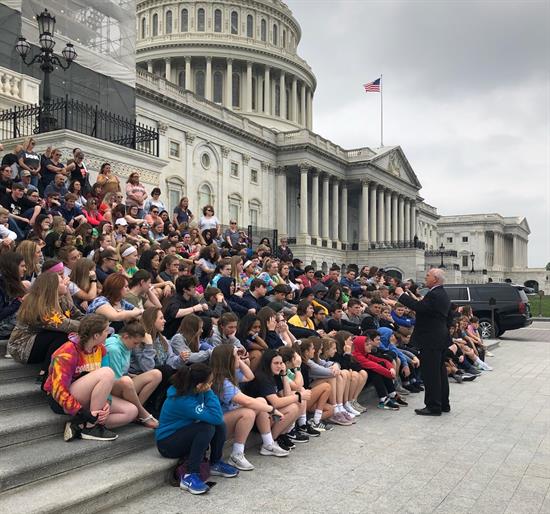Opinion Pieces
UAlbany and CNSE should merge
Washington,
February 19, 2022
I was energized to hear Gov. Kathy Hochul lay out a vision in her State of the State for sweeping investment in the State University of New York that will be good for my constituents and an all of New York. Specifically, Hochul’s proposal to reunite UAlbany and the College of Nanoscale Science & Engineering is one we can all get behind. As an engineer, former state legislator and now chair of the House Subcommittee on Environment and Climate Change, this is an issue close to my heart. I have witnessed SUNY’s remarkable power to act as an engine of economic and social opportunity for New Yorkers while also leading the way on important scientific advances on society’s greatest challenges. That is the driving purpose of a strong public university system like SUNY, and a reunited UAlbany and CNSE epitomizes this unqualified good. CNSE was founded at UAlbany in 2001 and rapidly grew into a world-renowned hub for nanotechnology research and development that helped attract GlobalFoundries to Saratoga County, one of the largest economic development coups in the history of upstate New York.It is not necessary to relitigate CNSE’s separation from UAlbany in 2014 to understand that reuniting it with the university that founded it is in the best interests of both institutions, their students, their faculty and New York. Hochul rightly argued that to compete globally, SUNY must maximize its research while at the same time staying true to the foundational principle that it remains affordable and accessible to every New Yorker. Investing in UAlbany means investing in a Carnegie-classified Research 1 institution with a student body that racially, ethnically and socioeconomically looks like New York and has repeatedly been praised for closing graduation gaps among minority students. The fact that UAlbany enrolls a higher percentage of Black and Latino undergraduates than any other research campus in the system is more than happenstance. Indeed, central to UAlbany’s commitment to its new College of Engineering & Applied Sciences has been the prospect that UAlbany is uniquely positioned to help diversify New York’s high-tech workforce. That is the true virtue of Hochul’s plan. Reuniting UAlbany and CNSE makes a powerful statement that the loftiest frontiers of scientific exploration are not just for exclusive ivory towers. More than that, a thoughtful reunification of these campuses will open new and exciting research avenues just as my colleagues and I in Congress are pushing for an unprecedented expansion in research funding through the National Science Foundation and U.S. Department of Energy. The prospect of greater collaboration between these two already-formidable research intuitions is nothing short of thrilling and should excite anyone with a stake in the economic vibrancy of the Capital Region. There are natural synergies between UAlbany’s biological and biomedical sciences programs and its world-renowned RNA Institute and CNSE’s groundbreaking work in nanoscience, nanobioscience and nanoengineering. Reunification would strengthen collaborations between researchers on both campuses and support cutting-edge science like the COVID-19 saliva surveillance program developed by the RNA Institute and UAlbany’s School of Public Health. In addition, CNSE researchers are already among the most frequent users of UAlbany’s Ion Beam Lab, which has been expanding the boundaries of particle research for five decades. In fact, NSF data from 2013 - the year before the split - show UAlbany and CNSE were already exceeding $500 million in annual research and development funding, and that was before UAlbany opened its new ETEC research and applied learning facility on the Harriman State Office Campus, where Hochul also wisely plans to build a new state-of-the-art Wadsworth Center public health lab.The semiconductor research at CNSE knits perfectly with UAlbany’s signature strengths in climate science, emergency preparedness, health sciences and cybersecurity, as these clusters are consumers of high volumes of data that need massive computational infrastructure. In many ways, reunification is a misnomer as the campuses have remained inextricably linked despite their separation. Still, the governor’s proposal is about far more than administrative efficiencies. It is a recommitment to the idea that New York should have the best public university system in the nation, that it should lead in discoveries that change society for the better and that the life-changing opportunity to be involved in that process should be open to everyone. That was the vision behind Gov. Nelson Rockefeller’s expansion of the SUNY system in the 1960s, which transformed UAlbany from a regional teachers college into the international research center that would later spawn CNSE and supercharge the Capital Region’s tech economy. Hochul’s plan to unite UAlbany and CNSE shows she clearly understands this, and I look forward to working with her in my capacity as a member of Congress to see it happen. |

